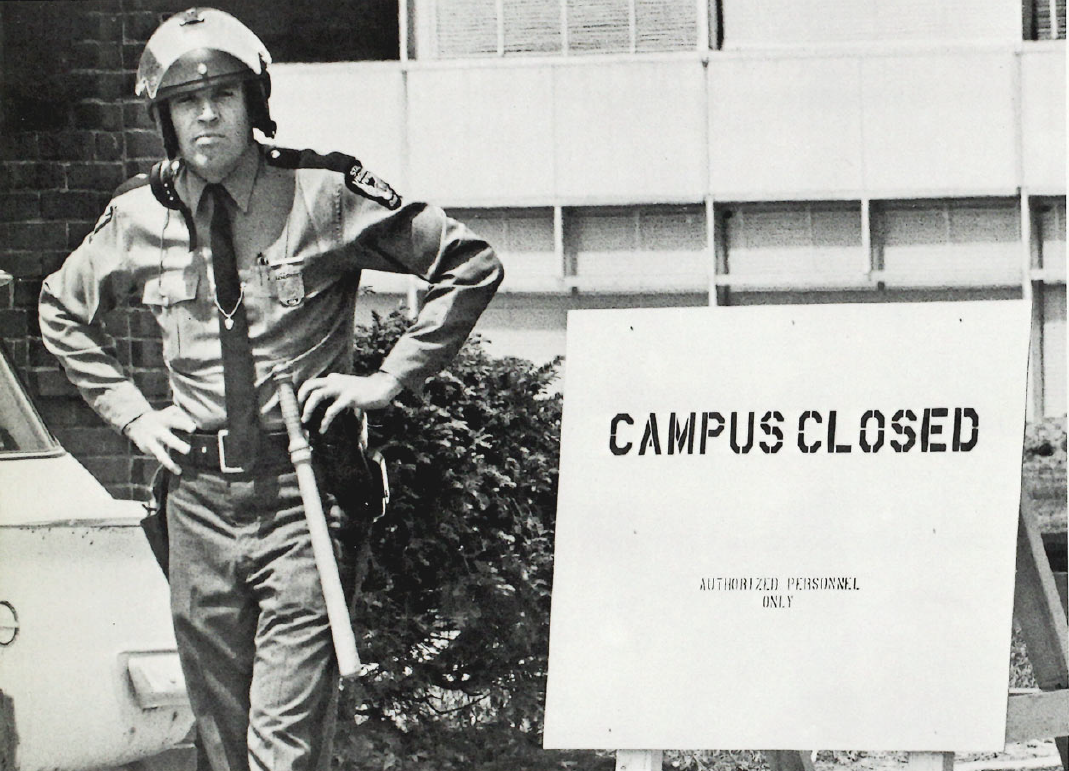Shutdowns: The Misfire Next Time
 It was the spring of 1969 and I was a senior at the tuition-free City College of New York (CCNY). A number of African-American and Hispanic students, unhappy with the scarcity of minorities on a campus located in the middle of Harlem, took over part of the campus and effectively shut down the school. In the weeks that followed negotiations led to a reopening of the campus, although racial tensions remained high as the college moved toward the end of the academic year. The protests led to an open admissions policy that increased African American and Hispanic enrollment. The policy would remain controversial until its demise in the mid-1990s, as fiscal pressures that also led to the imposition of tuition created a call to end a policy that necessitated many remedial classes.
It was the spring of 1969 and I was a senior at the tuition-free City College of New York (CCNY). A number of African-American and Hispanic students, unhappy with the scarcity of minorities on a campus located in the middle of Harlem, took over part of the campus and effectively shut down the school. In the weeks that followed negotiations led to a reopening of the campus, although racial tensions remained high as the college moved toward the end of the academic year. The protests led to an open admissions policy that increased African American and Hispanic enrollment. The policy would remain controversial until its demise in the mid-1990s, as fiscal pressures that also led to the imposition of tuition created a call to end a policy that necessitated many remedial classes.
CCNY today, even with tougher standards, continues its role of educating working class and poor students, many of whom are the first in their family to attend college, albeit with a more diverse population to admit.

Howard J. Silver served for a quarter century as the executive director of the Consortium of Social Sciences Agencies. His blog appears monthly at Social Science Space.
A year later, I was a graduate student in political science at The Ohio State University in Columbus. In late April, a number of students, again distressed by the lack of diversity on campus, declared a strike and tried to shut down the university. A few days after this began, President Nixon announced the invasion of Cambodia and disruptions broke loose on campuses all over America. Then four students were killed at Kent State and the situation in Columbus escalated with National Guard troops arriving and tear gas permeating the campus. Soon orders came to vacate our new graduate student dorm in 24 hours. For the second year in a row a school shutdown had sent me home. School soon reopened and things calmed down somewhat through the completion of classes. Nowadays, school shutdowns are more likely to involve financial exigency, rather than political protest.
In 1980 I arrived in Washington, D.C. Even though there were a number of short shutdowns of the federal government during the Reagan Administration, most of the closures I dealt with involved blocking streets for presidential and visiting dignitaries’ motorcades. Last week’s visits of Pope Francis and Chinese President Xi Jinping are two recent examples.
However, in the past 20 years there have been two confrontations between the executive and legislative branches of the federal government that have led to significant shutdowns of the U.S. government. These closures lasted more than a few days, yet the disruptions for most Americans’ lives were few. Since Social Security checks continued to flow and Medicare continued its coverage, the media liked to focus on the closed national parks or problems with veterans’ services.
In 1974, Congress passed the Budget Control and Impoundment Act. Aside from creating the Office of Management and Budget to replace the old Bureau of the Budget, and budget committees in each House, the law’s goal was to provide congressional appropriators a few extra months to complete the job of funding the agencies and programs of the federal government. The federal fiscal year would now start on October 1, instead of July 1.
The law has not worked. Congress has rarely completed the appropriations process on time, which has necessitated enactments of continuing resolutions, or CRs, to avoid shutdowns. Most of the time these are worked out and government stays open, although CRs use the previous year’s funding numbers and usually preclude any new program starts and the final spending bills have been delayed sometimes six month into the fiscal year.
The two major closures occurred first in 1995-96 when President Clinton and House Speaker Newt Gingrich, R-Georgia, clashed over federal spending. The new speaker thought he could flex his newly-muscled House majority and the president would not give him the satisfaction. Although a CR was enacted before the beginning of the new fiscal year, it expired on November 14 and was not renewed. Six days later another CR passed and the government reopened. However, on December 16 the CR again expired and the government shut down again until January 20. The press jumped on Gingrich for “throwing a temper tantrum” regarding his seat on the plane carrying the U.S. delegation to the funeral of Israeli Prime Minister Yitzhak Rabin, and the public generally blamed the Republicans for the disruption.
In 2013, Republicans wanted, as they still do, to deny funding for the implementation of the Affordable Care Act, or Obamacare. This confrontation, mainly between the Republican-majority House and a Democratic-majority Senate, forced a 17-day shutdown of the federal government starting October 1. During this closure, Congress enacted — and the president signed — a number of exceptions, allowing funding to continue to the Department of Defense, NIH, the Food and Drug Administration, Head Start, and others. Finally, Congress passed and the president signed a CR that carried over into January 2014. On January 15, Congress and the President agreed on an omnibus appropriations bill that included all discretionary spending for fiscal year 2014.
In 2015, we were apparently headed toward another budget confrontation and possible shutdown; this time over federal funding of Planned Parenthood. With the announcement of the resignation of House Speaker John Boehner, R-Ohio, it appears that Congress will pass a CR to prevent, at least until December 11, another government closure.
Why can’t Congress get its most fundamental job, funding the government, done without going to the brink of shutdown? Many reasons are offered. One cites the gerrymandering of congressional districts so that there are so many safe seats that a member is more in danger of losing his/her seat in a party primary than in a general election (see Eric Cantor). This encourages members to play to their most ideological constituents who are more likely to turn out in a primary election and exacerbates the partisan divisions in the Congress.
Another reason notes that the appropriations committees, which used to work in relative comity because members did not get on this prestigious panel without demonstrating a willingness to compromise and a generally centrist politics, have changed. In an era of budget cuts, the committee has not been a desirable assignment for some members and for others ‘compromise’ is a dirty word. In addition, there are very few centrists left in Congress.
Former congressmen Tom Davis, R-Virginia, and Martin Frost, D-Texas, have written a new book, The Partisan Divide: Congress in Crisis. These two former chairs of their respective congressional campaign committees propose a third explanation. Both argued for the reinstatement of earmarks. These were congressionally sponsored projects that turned up in appropriations bills usually directing specific district-based spending. When the Republicans became the House majority again in 2011 they banned earmarks. The example of the ‘Bridge to Nowhere’ in Alaska became the poster child for their campaign to eliminate these abuses.
As Davis, Frost and others suggest, this may have been a mistake. Earmarks offered a way to get members to accept spending bills and became bargaining chips for the leadership both on the appropriation committees and in the full House and Senate. Whether restoring earmarks would also restore comity and compromise without further actions is a big question.
CRs and government shutdowns only create uncertainty for agencies as they try to fund their programs. For research agencies, such as NSF and NIH, this may halt the review process and processing of grants. For an agency like the Census Bureau, closures create havoc with research and testing agendas and the conduct of other surveys. This is true for the other statistical agencies as well. In addition, a federal workforce that is jerked around by these shutdowns is not a happy group of people.
As I noted earlier, the speaker’s resignation has averted another confrontation for the moment. The CR that Congress expects to soon pass and the president to sign should be free of amendments. However, it will, as most CRs do, kick the can down the road, this time until December 11. What will happen then with new Republican leadership in the House supposedly more submissive to those who want no compromises? Will another government shutdown be our 2015 Christmas present?































































































